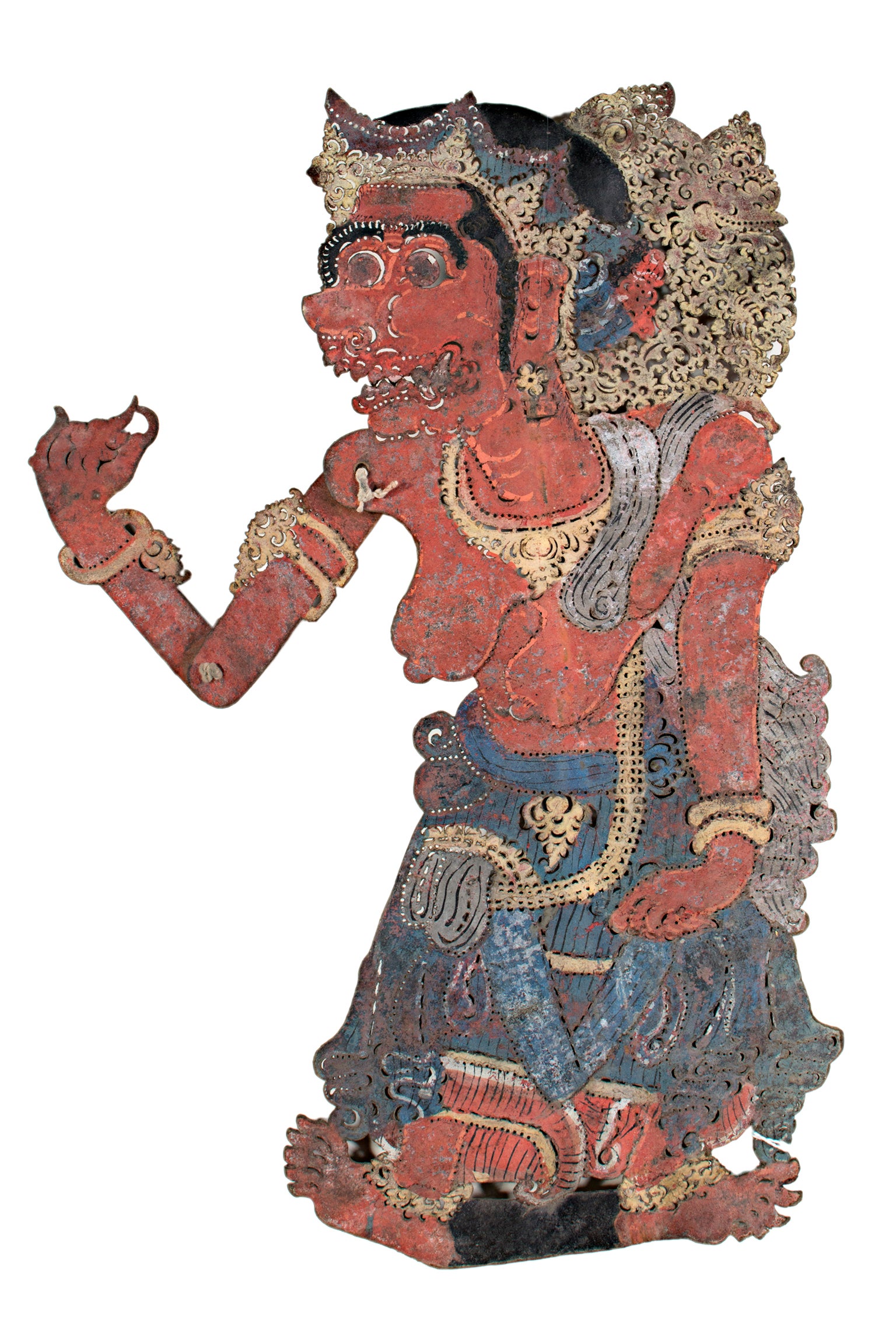
They are usually copied from a master stencil and are highly stylised. The outline of the puppet is cut using a special, thick knife and the minute details carved out with a chisel and a hammer. Fresh cow or water buffalo skin, but also bear, deer, and other animals, is soaked in a solution of tree bark and water, cured and stretched out tightly on a frame and dried in the sun for two weeks, so the process can only be done in the dry season. It takes about three weeks to create one puppet. Referred to as ‘hides’, the smaller ones are articulated, their arms being moved with sticks, made of carved buffalo horn, and the larger ones, weighing up to eight kilos, are not moveable and are not, strictly speaking, puppets. They are made up of figures cut from dried cow or water buffalo hide that is cured and becomes more parchment than leather. Puppets are Made from Cow or Buffalo Hide The wayang kulit shadow puppets – wayang, although translated as ‘shadow’, is a more general term referring to both the theatre and the puppets themselves – exist in two forms: large perforated leather puppets, a classical form with religious origins, and small leather puppets, popular in the countryside and village shows.

This oldest known collection of 350 pieces, containing the earliest datable and finest examples of shadow puppets, given to the British Museum in 1859 by his family, forms one of the most fascinating parts of the exhibition. Raffles (1781-1826), an avid collector who was fascinated by the artistic culture he found in Java, acquired two different types: wayang purwa, the original and most popular form, based on tales from the Mahabharata and Ramayana, and wayang madya, based on medieval Javanese romantic tales about the princes Panyi and Damarwulan. Sir Stamford Raffles Was and Avid Collector They were collected by the founder of Singapore, Sir Thomas Stamford Raffles, Lieutenant Governor of Java between 1811-1814. On display are wayang kulit, shadow puppets from early 19th century Java, a highly developed form of shadow theatre dating back to the 11th century, played in villages to mark rituals such as marriage or circumcision. Exhibition of Shadow Puppet Theatre from Indonesia, Malaysia, and ThailandĪ new exhibition at the British Museum, Shadow Puppet Theatre from Indonesia, Malaysia and Thailand, curated by Dr Alexandra Green, draws on the unique Southeast Asian puppet collection at the museum, explores the relationships between the traditions of the different countries and looks at the adaptations that shadow theatre has made to changing contexts over time.ĭr Green, who is Henry Ginsberg Curator for Southeast Asia at the British Museum, has organised the display in conjunction with Matthew Isaac Cohen, Professor of International Theatre at Royal Holloway, University of London, a practising dalang, who studied in Surakarta and has research interests in Indonesian performing arts and traditions of puppetry around the world. Prayers and offerings precede each performance, accompanied by music, as the puppet masters, dalang, ask for blessings and protection and pay homage to their teachers. Puppets are treated with respect, revered as receptacles of living energy. The art of the puppeteer developed from ancient animistic beliefs whereby every object, animate or inanimate, has a soul. They are considered sacred, embodying Buddhism, Hinduism, Brahmanism and ancestor worship. The shadows create a sense of mystery and divine inspiration, having their roots in religious observances. Shadow puppet theatre is not just for children but for audiences of all ages and the traditions exist throughout Asia. Narrators stand in front, giving information, chanting and singing, helping the audience, who are seated on the ground on mats, to understand the tale that is unfolding. The puppeteers may even periodically make an appearance.


The puppeteers manipulate the shadow puppets so that the silhouette is visible from the other side where spectators sit and watch. These tales are recounted at night, in the balmy warmth of the tropics, in a temple compound or in a rice field, manoeuvred by five or six puppeteers who are concealed behind a white screen which is illuminated by candles. It’s time for shadow puppet theatre! Popular in Southeast AsiaIn Southeast Asia As the music of bamboo and wood instruments starts, the adventures of mythical demons and goddesses, heroes and villains, epic battles, magic spells and unrequited love unfold in the form of silhouettes. CANDLES FLICKER in the dark and magical shadows move across a white screen.


 0 kommentar(er)
0 kommentar(er)
